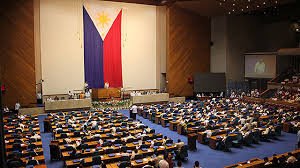
After the 1986 People Power Revolution, the Philippine was finally free from the dictatorship that plague the country for decades. But at the same time, the disgraced dictatorship of Marcos left a huge void that needed to be filled. And the new government led by Corazon Aquino rise to the challenge of filling that void.
Here's a bit of history of the 1987 Constitution.
The 1987 Constitution
The Constitution currently in effect was enacted in 1987, during the administration of President Corazon Aquino, and is popularly known as the "1987 Constitution”. After the fall of the Marcos regime, Corazon Aquino became the president of the Philippines. But the Aquino government faced a major issue that will decide the future of the country: choosing what constitution should take effect.
The Aquino government was given three choices: revert to the 1935 Constitution, retain the 1973 Constitution and be granted the power to make reforms, or start anew and break from the “vestiges of a disgraced dictatorship”. They decided to make a new constitution.
In March 1986, President Aquino proclaimed a transitional constitution to last for a year while a Constitutional Commission drafted a permanent constitution. This transitional constitution, called the: Freedom Constitution”, maintained many provisions of the old one, including in rewritten form the presidential right to rule by decree. A permanent constitution was drawn up in summer 1986 in a constitutional convention whose members were appointed by the president. The convention was composed of 48 members appointed by President Aquino. It largely restored the set-up abolished by Marcos in 1972, but with new controls on the president based on the experience of Marcos rule. The new constitution was formally adopted on February 02, 1987.
The new constitution is composed of a preamble and 18 self-contained articles. It established the Philippines as a “democratic republican State” where “sovereignty resides in the people and all government authority emanates from them. It allocates governmental powers among the executive, legislative, and judicial branches of the government. The Executive branch is headed by the president and his cabinet, whom he appoints. To prevent what happened during the time of Ferdinand Marcos, the president’s power is limited by significant checks from the two co-equal power: the legislative (Congress) and the judicial (Supreme Court), especially during times of emergency.
The presidential and vice-presidential term is a single six-year term (thus Aquino's term lasted until mid-1992). The president may impose martial law for no longer than 60 days, and the decree proclaiming it can be revoked by Congress. The Supreme Court may also review the declaration of martial law and decides if there were sufficient justifying facts for the act. The president may not abolish Congress.
Congress is divided into two Houses: The Senates and the House of Representatives. 24 senators are elected at large by popular vote and can serve no more than two six-year consecutive terms. The House is composed of district representatives representing a particular geographic area and makes up 80% of the total number of representatives. There are 234 legislative districts in the Philippines that can serve for three years. Party-list representatives may fill up not more than 20% of the seats in the House. Congress also have the power to declare war, through two-thirds vote from the upper and lower houses. The legislation however is also subject to executive check, as the president retains the power to veto or stop a bill from becoming a law. Congress may only override this power with two-thirds vote in both houses.
The judiciary is composed of the Supreme Court and the lower courts. Supreme Court is a 15-member court appointed by the president without the need to be confirmed by Congress but the appointment the president makes however, is limited to a list of nominees provided by a constitutionally specified Judicial and Bar Council. The Supreme Court may hear, on appeal, any cases dealing with the constitutionality of any law, treaty, or decree of government, cases where questions of jurisdiction or judicial error are concerned, or cases where the penalty is sufficiently grave.
The Constitution also established three independent Constitutional Commissions: The Civil Service Commission, the Commission on Election and the Commission on Audit.
The Office of the Ombudsman was also created to further promote ethical and lawful conduct of the government. The Ombudsman can charge public officials before the Sandiganbayan. Only the House of Representatives can initiate the impeachment of the president, members of the Supreme Court, and other constitutionally protected officials such as the Ombudsman. The Senate will then try the impeachment case.
Article XVII of the 1987 Constitution also provided three methods of which the constitution can be changed. These methods are:
Constitutional Assembly (or Con-Ass) – the Congress (the House of Representatives and the Senate) may convene to propose an amendment to the constitution.
Constitutional Convention (or Con-Con) – Congress upon receiving two-third votes of its members may call for a constitutional convention. In a Con-Con delegates will propose amendments or revision on the constitution, not Congress.
People’s Initiatives (or PI) – In this method, amendments to the Constitution maybe proposed by the people upon a petition of at least 12% of all registered voters. All legislative districts must be represented by a 12% of the registered voters therein. No amendment is allowed more than once every five years since a successful PI.

Yay!
Your post has been boosted with ESTM. Keep up the good work! Install Android, iOS Mobile app or Windows, Mac, Linux Surfer app!
Learn more: https://esteem.app
Join our discord: https://discord.gg/8eHupPq
Hello @chrislyr, thank you for sharing this creative work! We just stopped by to say that you've been upvoted by the @creativecrypto magazine. The Creative Crypto is all about art on the blockchain and learning from creatives like you. Looking forward to crossing paths again soon. Steem on!